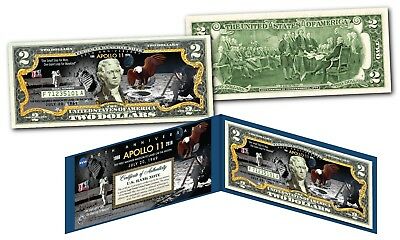-40%
NASA Skylab Achievement Certificate, Flown Metal Medallion, Presentation Letter
$ 13.2
- Description
- Size Guide
Description
Un-issued NASA Skylab Achievement Certificate, Flown Metal Medallion, Original Presentation LetterOriginal 1974 NASA Skylab Achievement Certificate, Original Presentation Letter, and Flown Metal Manned Flight Awareness Medallion
Medallion is in Very Good Used condition, as is the Presentation letter, other than the original tri-folds as the letter at the time came in an envelope
The Un-issued Skylab Achievement Certificate is in Very Good Used condition but does have a Stain on the right side
Please see all attached pictures
Shipping includes a Tracking Number
Skylab was the first United States
space station
, launched by
NASA
, occupied for about 24 weeks between May 1973 and February 1974. It was operated by three separate three-astronaut crews:
Skylab 2
,
Skylab 3
and
Skylab 4
. Major operations included an orbital workshop, a
solar observatory
,
Earth observation
, and hundreds of
experiments
.
On August 8, 1969, the
McDonnell Douglas Corporation
received a contract for the conversion of two existing S-IVB stages to the Orbital Workshop configuration. One of the S-IV test stages was shipped to McDonnell Douglas for the construction of a mock-up in January 1970. The Orbital Workshop was renamed "Skylab" in February 1970 as a result of a NASA contest. The actual stage that flew was the upper stage of the AS-212 rocket (the S-IVB stage, S-IVB 212). The mission computer used aboard Skylab was the
IBM
System/4Pi
TC-1, a relative of the
AP-101
Space Shuttle computers. The Saturn V with serial number SA-513, originally produced for the Apollo program – before the cancellation of Apollo 18, 19, and 20 – was repurposed and redesigned to launch Skylab. The Saturn V's third stage was removed and replaced with Skylab, but with the controlling
Instrument Unit
remaining in its standard position.
Skylab was launched on May 14, 1973, by the modified Saturn V. The launch is sometimes referred to as Skylab 1. Severe damage was sustained during launch and deployment, including the loss of the station's
micrometeoroid
shield/sun shade and one of its main
solar panels
. Debris from the lost micrometeoroid shield further complicated matters by becoming tangled in the remaining solar panel, preventing its full deployment and thus leaving the station with a huge power deficit.
Immediately following Skylab's launch,
Pad 39A
at
Kennedy Space Center
was deactivated, and construction proceeded to modify it for the
Space Shuttle
program, originally targeting
a maiden launch in March 1979
. The crewed missions to Skylab would occur using a
Saturn IB
rocket from Launch Pad 39B.
Skylab 1 was the last uncrewed launch from LC-39A until February 19, 2017, when
SpaceX CRS-10
was launched from there.
Unable to be re-boosted by the
Space Shuttle
, which was not ready until 1981, Skylab's orbit decayed and it disintegrated in the atmosphere on July 11, 1979, scattering debris across the
Indian Ocean
and
Western Australia
.


















